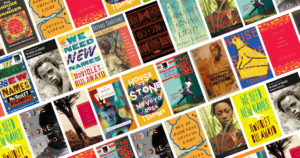
Writing in The Guardian‘s “Books That Made Me” series, Taiye Selasi had some books listed. She was reading Chiara Barzini’s Things that Happened Before the Earthquake. She wished she had written Garth Greenwell’s What Belongs to You. She was influenced by Milan Kundera’s The Unbearable Lightness of Being. Her decision to leave the US to live in Italy was influenced by Kamin Mohammadi’s Bella Figura: How to Live, Love and Eat the Italian Way. The last books that made her cry are Mira Jacob’s The Sleepwalker’s Guide to Dancing and Katja Meier’s Across the Big Blue Sea. The last to make her laugh are Rabih Alameddine’s An Unnecessary Woman and Paul Beatty’s The Sellout. The books she gives as gifts are Lydia Davis’ The Collected Stories of Lydia Davis and Teju Cole’s Known and Strange Things.
And then she said interesting things about Arundhati Roy’s The God of Small Things and Alice Walker’s The Color Purple. The former is the book that changed her life.
I first read Roy at university, when I was struggling to abandon the safety of studying for the wilds of creating. As a lifelong bibliophile, I’d felt that kind of passionate love before. What was new was the sense of being given permission. With her language, her wisdom, her brutal observations rendered in beautiful prose, Roy’s text gave me permission to write in a way that I’d been until then too afraid to attempt. That book suggested what might lie on the other side of my fear.
Not at all surprising: poetic prose stylists are influenced by poetic prose stylists. Just read Ghana Must Go, arguably the most intensely lyrical African novel published.
However, Alice Walker’s The Color Purple is the book she is most ashamed not to have read. While this is surprising at first sight, considering the number of books and good books and classics there are in the literary world, combined with the world of books outside literature, it isn’t so much. Every big writer has a big book they are ashamed, or not so ashamed, to not have read.
Read the full Q&A HERE.








COMMENTS -
Reader Interactions